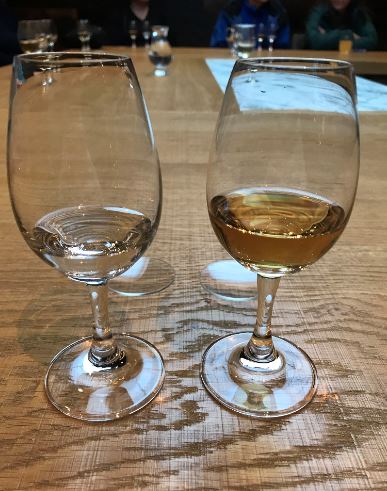We all have busy lives and it can be difficult to find the time to have a break. However, when we do it can help us clarify who we are and what we might want to change.
Time out is an opportunity to stimulate your senses.
At Behaviour Works we use a model of behaviour change called the COM-B model that helps you to work out what needs to change. For something to change in your life you need 3 things – Capability (e.g. information and knowledge), Motivation and Opportunity (e.g. time, resources). Finding a chance to take time out requires ‘opportunity’.
I recently took some time out and took the opportunity to visit Harris in the Outer Hebrides and my time on Harris was a true multi-sensory experience. The trip reminded me to take time out to engage all my senses.
Using our 5 senses
We have 5 basic senses - taste, touch, smell, sight and hearing. They help us determine, understand and perceive our world. Our brain processes the information from our sensory organs and allows us to react.
What we see, feel, hear, taste and smell affects our mood and our behaviour.
What do you do each day to stimulate your senses?
Here’s some examples of how Harris stimulated all my senses.
Taste
Apparently, the average human has around 10,000 taste buds. There is nothing quite like food eaten outdoors to get those taste buds working. Even better, there is nothing quite like freshly caught and freshly cooked seafood eaten outdoors after a 3-mile walk along the coastline. Sam’s Seafood Shack in the small village of Rodel was a taste sensation! I savoured every mouthful and all 10,000 taste buds were stimulated.
Touch
Touch is thought to be the first sense that humans develop and involves several distinct sensations that are communicated through the skin – pressure, temperature, light touch, vibration, pain etc. In addition to being used to interact with the world it appears to be important to our wellbeing, such as conveying compassion from one human to another.
Harris offered up so many opportunities to be aware of my sense of touch from the fine white sands of Luskentyre beach with its scattering of tiny, delicate shells to the intricately woven textures and patterns of Harris tweed.
Smell
Our noses have about 400 types of scent receptors and apparently we can detect about 1 trillion different scents. What better way to use those scent receptors than by ‘nosing’ a glass of whisky? I did some ‘nosing’ and tasting at the Isle of Harris distillery.
Vision
Where to start with how Harris stimulated my sense of vision?
The landscape of the west coast ranged from looking like a minimalist painting with blue (well, sometimes blue) sky, blue-green crystal-clear water coupled with the pure white sands on the beach, through to the vibrantly coloured machair flowers on their backdrop of green grass. The palate of the landscape is so simple that colours appeared to pop out from it in stark, but beautiful contrast.
The sunsets were impressive too. Watching the sun set and the changing light on the surrounding landscape and how it reflected on the still water of the sea loch was a magical and meditative experience.
Hearing
Harris is known for its windy conditions and the roar of the wind and waves as I approached Scarista beach was deafening. Sitting on the shoreline being buffeted by the wind (and sandblasted by the grains whipped up by the force of the wind) and listening to the force of the waves crashing on the beach was incredibly energising.
When the wind died down, the peace and quiet was absolute and only occasionally interrupted by the sound of an oystercatcher calling, or one of the myriad of other seabirds.
Engaging your senses every day
I think I can safely say that my time on Harris stimulated my senses in so many ways and made me think about how I can capture the same feelings and tune into my senses back in the real world and within my normal routine.
Time out on holiday, whether it’s a relaxing beach holiday or a thrill-seeking adventure holiday, allows us the opportunity to view our lives from a different perspective; but let’s face it, we can’t always be heading off on holiday to take some time out.
The mindfulness community suggests we should try to build in little time-out moments or pauses during the day to stop and be aware. These can be as short as 20-60 seconds every hour or even just a short period once a day. In these little multi-sensory bursts, we can think about all our senses – taste, touch, smell, vision, hearing.
5 techniques to help you take micro-time out moments
It’s all too easy to be too busy to make this happen so here are some of our techniques that strengthen the opportunity to take time out for those micro-time out moments:
Set a reminder to trigger your micro-moments.
Use a visual prompt – set your phone or computer home screen with an image that will remind you to stop for a moment before logging in.
Use an object prompt – choose an object in your home or on your desk that can remind you to pause and be aware of your senses.
Link it to another behaviour – making a cup of tea, waiting in a queue, sitting at a red light, folding laundry.
Practice it - the more you do it the easier and more automatic it will become and the quicker you will reap the benefits.
Give yourself the opportunity to take a break from your normal routine to create micro-moments in your day.
Allow yourself to step back from your day, look at it from a different perspective and try to remember to stimulate all your senses. Clarity comes from those still moments and is a key element to making change happen in your life.
Tell us in the comments below what you do each day to stimulate your senses.
Best wishes
Register for blog posts direct to your inbox.
Behaviour Works aim is simple. To help make change happen in your personal, family or working life. We help people across the world with their change journey with our ‘Making Change Happen’ online training.
All photos by Eleanor.









